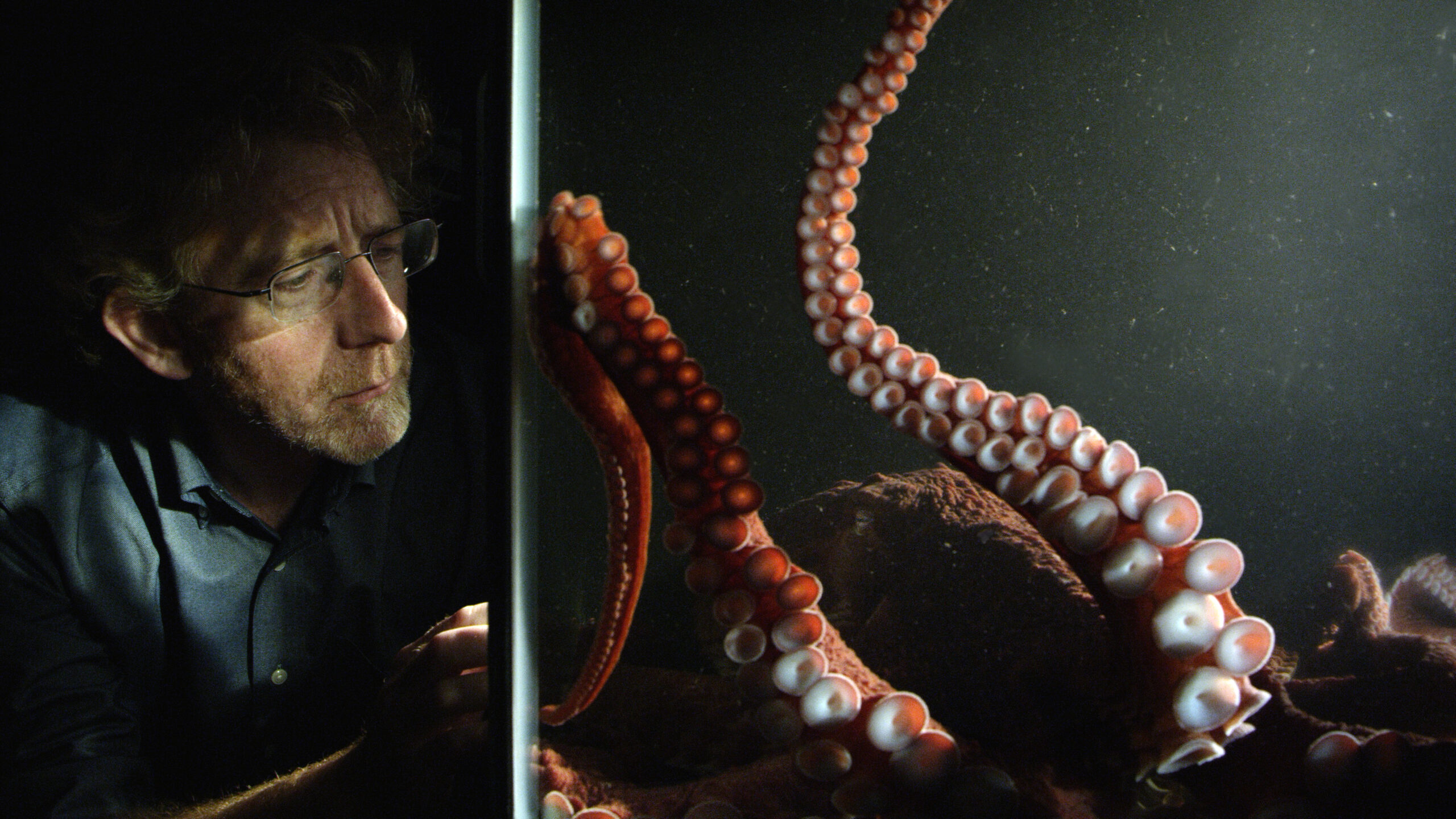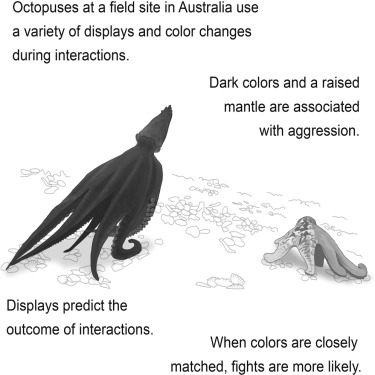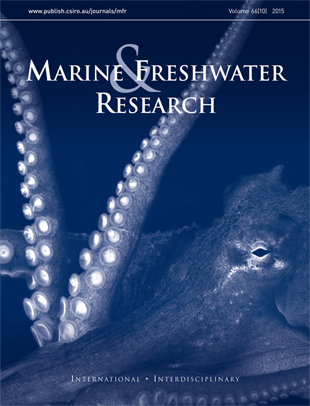Book
1. Scheel, D. Many Things Under a Rock: The Mysteries of Octopuses, Young Readers Edition. 2025 forthcoming. Norton Press.
2. Scheel, D. Many Things Under a Rock: The Mysteries of Octopuses. 2023 (13 Jun) with illustrations by Laurel “Yoyo” Scheel. Norton Press. https://wwnorton.com/books/
Articles and Chapters
1. Gleadall, I.G., H. Moustahfid, W.H.H. Sauer, L. Ababouch, A.I. Arkhipkin, J. Bensbai, I. Elegbede, A. Faraj, P. Ferreiro-Velasco, R. González-Gómez, C. González-Vallés, U. Markaida, P.S. Morillo-Velarde, G.J. Pierce, S. Pirro, C. Pita, K. Roumbedakis, Y. Sakurai, D. Scheel, P.W. Shaw, P. Veiga, D.A. Willette, A. Winter, T. Yamaguchi. 2024. Towards Global Traceability for Sustainable Cephalopod Seafood Marine Biology. Marine Biology 171, 44 (Topical Collection ‘Advances in Cephalopod Research’). https://doi-org.consortiumlibrary.idm.oclc.org/10.1007/s00227-023-04300-6. | (SharedIt link) | (Abstract) |
2. Chancellor S., B. Grasse, T. Sakmar, D. Scheel, J. S. Brown, R. M. Santymire. 2023. Estimating the effect of age on the reproductive and stress physiology of Octopus bimaculoides using dermal hormones. Animals 13(19), 3115. https://doi.org/10.3390/ani13193115 | (pdf) |
3. Godfrey-Smith, P., D. Scheel, M. Lawrence, S. Chancellor, S. Linquist. 2022. In the Line of fire: debris throwing by wild octopuses. PLoS ONE 17(11): e0276482. https://doi.org/10.1371/
4. Malinowski, J., D. Scheel, M. McCloskey. 2021. Do animals dream? Consciousness and Cognition 95 (2021): 103214. | (Abstract) | (Request pdf) | Also see: Heidi dreaming | The Atlantic book review of “When Animals Dream” |
5. Chancellor, S., L. Abbo, B. Grasse, T. Sakmar, J. Brown, D. Scheel, R.M. Santymire. 2021. Determining the effectiveness of using dermal swabs to evaluate the stress physiology of laboratory cephalopods: a preliminary investigation. General and Comparative Endocrinology https://doi.org/10.1016/j.
6. Scheel, D, C. Johnson. 2021. Sea-surface temperatures predict targeted visual surveys of octopus abundance. Marine & Freshwater Research. https://doi.org/10.1071/
7. Chancellor, S., D. Scheel, J.S. Brown. 2020. Design of experimental food patches to measure foraging intensity for octopus: a case study with the giant Pacific octopus, Enteroctopus dofleini. Journal of Molluscan Studies 87(1). https://doi.org/10.1093/
8. D. Scheel. 2020. Savoir Disparaître. Invited story, special issue “The Art of the Lure”. Revue Billebaude 15:12. https://www.chassenature.org/billebaude/ (in French, short piece ‘Know how to disappear’).
9. Hernández-Urcera, J., M. Cabanellas-Reboredo, M.E. Garci, J. Buchheim, S. Gross, A. Guerra, D. Scheel. 2019. Cannibalistic attack by Octopus vulgaris in the wild: behaviour of predator and prey, Journal of Molluscan Studies. https://doi.org/10.1093/mollus/eyz019. (Abstract) | Request pdf |
10. Scheel, D. 2018. Octopuses in wild and domestic relationships. Social Science Information Special Issue: The Anthropocean 57(3): 403-421. (Abstract) | Request pdf |
Some ideas developed in this paper are related in BBC Natural World / PBS Nature documentary.
[Aug 2019] BBC Natural World air date 22 Aug 2019 The Octopus in My House.
[Oct 2019] PBS Nature air date 2 Oct 2019 Octopus: Making Contact.
OCTOPUS: MAKING CONTACT | Wednesday, October 2

Photo courtesy Passion Planet Ltd/Ernie Kovacs
Some coverage of this documentary:
Jackson Wild Media Awards [Oct 2020]: Best Animal Behavior Film, Best Writing.
PBS [Oct 2019] | PBS Clip – Dreaming | Earth Touch News | AssignmentX & Part 2 | BoredPanda | BBC [Aug 2019] | The Telegraph | The Times | NewStatesman | WhatsonTV |
11. Scheel, D., P. Godfrey-Smith, S. Linquist, S. Chancellor, M. Hing, and M. Lawrence. 2017. Octopus Engineering , Intentional and Inadvertent. Communicative & Integrative Biology. https://doi.org/10.1080/19420889.2017.1395994.
12. Scheel, D., S. Chancellor, M. Hing, M. Lawrence, S. Linquist, P. Godfrey-Smith. 2017. A second site occupied by Octopus tetricus at high densities, with notes on their ecology and behavior. Marine and Freshwater Behaviour and Physiology 50(4): 285-291. http://www.tandfonline.com/doi/pdf/10.1080/10236244.2017.1369851
13. Hollenbeck, N. and D. Scheel. 2017. Body patterns of the frilled giant Pacific octopus, a new species of octopus from Prince William Sound, AK. American Malacological Bulletin 35(2): 134-144. (Abstract) | Request pdf | Frilled giant Pacific octopus
Some news coverage of this paper: [Mar 2019] Ecology Hour | [Jan 2018] | Sci News | Mother Nature Network | [Dec 2017] Earther A new species of giant Octopus | Science Alert | Inhabitat | Newsweek | Men’s Journal | International Business Times | Complex | Azula | Slash Gear | Outer Places | Inverse Science | Dive Photo Guide | Quartz |
14. Hollenbeck, N., D. Scheel, M. Fowler, G. K. Sage, R. K. Toussaint and C. Talbot. 2017. Use of swabs for sampling epithelial cells for molecular genetics analyses in Enteroctopus. American Malacological Bulletin 35(2): 145-157. (Abstract) | Request pdf |
15. Scheel, D., P. Godfrey-Smith, S. Linquist, S. Chancellor, M. Hing & M. Lawrence. 2017. Octopus engineering, intentional and inadvertent. Communicative & Integrative Biology. (Abstract) | (Pdf open access)
16. Scheel,D., S. Chancellor, M. Hing, M.Lawrence, S. Linquist, P. Godfrey-Smith. 2017. A second site occupied by Octopus tetricus at high densities, with notes on their ecology and behavior. Marine and Freshwater Behaviour and Physiology 50(4): 285-291.(Abstract) | (Download pdf from publisher) |
Some news coverage or commentary on this paper: (Dec 2017) Addendum in Comm & Integ Biol | (Nov 2017) The Conversation: Did they mean to do that? | Fox News | CBCNews | (Oct 2017) Live Science (Photo synopsis) | Evening Standard | Metazoan #55 (blog) | Celeb8.Oct8 (Quartz) | Anchorage KTUU news | (Sep 2017) Science | Metazoan #54 (blog) | The Awl | BigThink | Newsweek | ArsTechnica | How Stuff Works | Popular Science | TreeHugger | Discover | Business Insider (video) | Quartz | International Business Times | The Indian Express | Daily Mail | Pune Mirror | Smithsonian (SmartNews) | The Guardian | Phys-Org | UIC press release
17. D. Scheel, T. Leite, J. Mather, K. Langford. 2017. Diversity in the diet of the predator Octopus cyanea in the coral reef system of Moorea, French Polynesia. Journal of Natural History 51(43-44): 2615-2633. (Abstract) | Full text | (Request pdf) | Download pdf from publisher (limited to first 100 requests for free e-print)
18. D. Scheel, P. Godfrey-Smith, M. Lawrence. 2016. Signal Use by Octopuses in Agonistic Interactions. Current Biology 26: 377-382. (Abstract) | (pdf) | (Video Abstract)
Some news coverage of this paper:
NPR Science Friday: Arms send a message
(Feb 2016) Discover – Blogs | Nature (highlights) | (Jan 2016) CBC News: Signals before battle | NPR Morning Edition | Scientific American | New Scientist | BBC News | Deutschlandfunk | Sciences et Avenir | Cosmos | Discovery Channel | ABC Australia | World Today | Newsweek | Guardian Australia | livescience | Motherboard | AAAS EurekAlert |
And a song! (Jan 2018) Octopolis (featuring Kristin Slipp)


20. D. Scheel, P. Godfrey-Smith, M. Lawrence. 2014. Octopus tetricus (Mollusca: Cephalopoda) as an ecosystem engineer. Scientia Marina 78(4). (Abstract) | (pdf)
21. Mather, J., D. Scheel. 2014. Chapter 2: Behavior, pp. 17-39 in Cephalopod Culture. J. Iglesias, L. Fuentes & R. Villanueva (Eds.) Springer Netherlands. 494 p. (Abstract) | (pdf) | (Book preface, pdf) | (Book table of contents, pdf) | (Purchase book)
22. Hollenbeck, N., D. Scheel. 2012. Is there a previously unknown cryptic species of giant Pacific octopus in Prince William Sound, Alaska? American Malacological Society Newsletter Fall 2012 43(2): 7-9. (AMS Newsletters) | (pdf)
23. Scheel, D, R. Anderson. 2012. Variability in the regional diet specialization of Enteroctopus dofleini in the eastern Pacific examined from midden contents. American Malacological Bulletin 30(2): 267-279. DOI: 10.4003/006.030.0206. (Abstract) | (pdf link below)
24. Scheel, D., Bisson, L. 2012. Movement patterns of giant Pacific octopuses, Enteroctopus dofleini (Wülker, 1910) Journal of Experimental Marine Biology and Ecology 416–417:21–31. DOI: 10.1016/j.jembe.2012.02.004. (Abstract) | (Request pdf) | (BBC Nature: In pictures)(2019 BBC link broken but see here) |
25. R.K. Toussaint, D. Scheel, G.K. Sage, and S.L. Talbot. 2012. Nuclear and mitochondrial markers reveal evidence for genetically segregated cryptic speciation in giant Pacific octopuses from Prince William Sound, Alaska. Conservation Genetics 13(6): 1483-1497. 10.1007/s10592-012-0392-4. (pdf link below)
26. R.K. Toussaint, G.K. Sage, S.L. Talbot, and D. Scheel. 2012. Microsatellite Marker Isolation and Development for the Giant Pacific Octopus (Enteroctopus dofleini). Conservation Genetics Resources 4(3): 545-548. DOI 10.1007/s12686-011-9588-z. (pdf link below)
27. Scheel, D., Vincent, T.L. 2009. Life: Optimal, evolutionary and intelligent design? Evolutionary Ecology Research 11:589-610. (pdf)
28. Scheel, D., Lauster, A., Vincent, T.L.S. 2007. Habitat Ecology of Enteroctopus dofleini from middens and live prey surveys in Prince William Sound, Alaska. Ch 20 in N.H. Landman et al (eds). Cephalopods Present and Past: New Insights and Fresh Perspectives, pages 434-458. Springer (Abstract) (Request pdf)
29. Scheel, D. 2002. Characteristics of habitats used by Enteroctopus dofleini in Prince William Sound and Cook Inlet, Alaska. P.S.Z.N. Marine Ecology: 23(3):185-206. (Abstract) | (pdf link below)
30. Willette, T.M., R. T. Cooney, V. Patrick, G. L. Thomas, T. Kline, D. Scheel. 2001. Ecological processes influencing mortality of juvenile pink salmon (Oncorhynchus gorbuscha) in Prince William Sound, Alaska. Fisheries Oceanography 10(Suppl. 1): 14-41. (Abstract) (pdf link below)
31. Cooney, R. T., T. M. Willette, J. Allen, C. Falkenberg, D. Scheel, V. Patrick, S. Vaughan, D. Mason, G. L. Thomas, T. Kline, L. Tuttle, J. Wilcox, E. Brown, D. Eschlinger, P. McRoy, A. J. Paul, B. Norcross, M. Bishop, C. Mooers. 2001. Ecosystem controls of pink salmon (Oncorhynchus gorbuscha) and Pacific herring (Clupea pallasi) production in Prince William Sound, Alaska. Fisheries Oceanography 10(Suppl. 1): 1-13. (Abstract) (pdf link below)
32. Scheel, D., C. Matkin, E. Saulitis. 2001. Distribution of killer whale pods in Prince William Sound, Alaska over a thirteen-year period, 1984-1996. Marine Mammal Science 17(3):555-569. (Abstract) (pdf link below)
33. Guy N. Cameron and D. Scheel 2001. Getting Warmer: Effect of Global Climate Change on Distribution of Rodents in Texas. Journal of Mammalogy: August 2001, Vol. 82, No. 3, pp. 652-680. (Abstract) (pdf)
34. Dodge, R., and D. Scheel. 1999. Remains of the prey: Recognizing the midden piles of Octopus dofleini in Prince William Sound and Port Graham, Alaska. The Veliger, 42(3):260-266. (pdf link below)
35. Vincent, T. L. S., D. Scheel, and K. Hough. 1998. Some aspects of diet and foraging behavior of Octopus dofleini in its northernmost range. P.S.Z.N.: Marine Ecology 19(1):13-29. (Abstract) (pdf link below)
36. Cameron, G.N., Seamon, J.O. & Scheel, D. 1997. Environmental change and mammalian richness: Impact on preserve design and management in East Texas. Texas Journal of Science 49(3) Supplement:155:180. (Abstract)
37. Scheel, D. & K.R. Hough. 1997. Salmon fry predation by seabirds near an Alaskan hatchery. Marine Ecology Progress Series 150:35-48. (Abstract) (pdf)
38. Vincent, T.L.S., Scheel, D., Brown, J., & Vincent, T.L. 1996. Tradeoffs and coexistence in consumer-resource models: It all depends on what and where you eat. American Naturalist 148(6): 1038-1058. (Cedar Creek: pdf)
39. Scheel, D., Vincent, T.L.S., & Cameron, G.N. 1996. Global warming and the species richness of bats in Texas. Conservation Biology 10(2):452-464. (Abstract) (pdf link below)
40. Scheel, D. & Packer, C. 1995. Variation in predation by lions: Tracking a moveable feast. pp 299-314 in: Serengeti II: Research, Management and Conservation of an Ecosystem. Sinclair, A.R.E. & Arcese, P., eds. Chicago: University of Chicago Press. (pdf link below) (Purchase at Amazon.com) (View on Google books)
41. Cameron, G.N., & Scheel, D. 1993. A GIS model of the effects of global climate change on mammals. Geocarto International 4:19-32.) (Abstract) (pdf link below)
42. Scheel, D. 1993. Watching for lions in the grass: The usefulness of scanning and its effects during hunts. Animal Behavior. 46(4):695-704. (Abstract) (pdf link below)
43. Scheel, D. 1993. Profitability, encounter rates and the prey choice of African lions. Behavioral Ecology 4(1):90-97. (Abstract) (pdf)
44. Scheel, D., & Packer, C. 1991. Group hunting behavior of lions: a search for cooperation. Animal Behavior 41(4):697-709. (Abstract) (pdf link below)
45. Packer, C., Scheel, D., & Pusey, A.E. 1990. Why lions form groups: Food is not enough. American Naturalist 136:1-19. (Abstract) (pdf)
Some ideas in this paper were related in the Allan Root Productions & Survival Anglia Ltd. documentary Queen of the Beasts [1989]: People Magazine |
46. Scheel, D. 1985. Road salt contaminates well, causes health hazards. J. of Environmental Health 47(4):202-203. (Abstract) (pdf link below)
